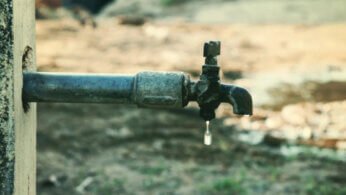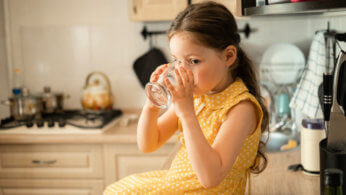
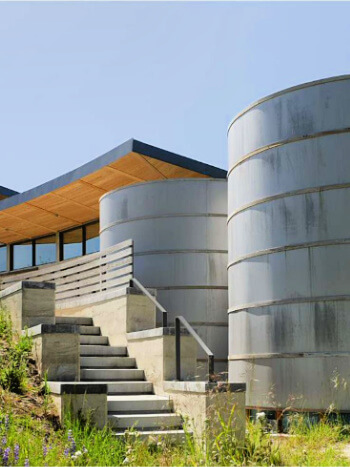

Water conservation is a critical issue that impacts us all, from the escalating Santa Barbara interstate water wars to the increasingly unaffordable Arizona water prices. As freshwater sources dry up, we face more frequent droughts due to the climate crisis; every drop saved contributes significantly.
Introduction to Our Best Water Conservation Tips
In this blog post, you’ll discover strategies for reducing water usage in your home and garden without sacrificing comfort or hygiene. We will explore how to limit the recreational use of running water without sacrificing enjoyment or health benefits. You’ll also discover innovative methods for reusing cold and hot greywater and its potential impact on our collective water footprint.
Finally, we’ll examine the significance of raising consciousness concerning saving water and how each person can affect this global problem. Let’s dive into the world of effective water conservation together.
How to Reduce Water Usage in the Home
The first step towards water conservation starts at home. There are several ways to reduce your water usage and save this precious resource, which is becoming increasingly scarce due to factors such as the Colorado River drought crisis and global freshwater basins drying up.
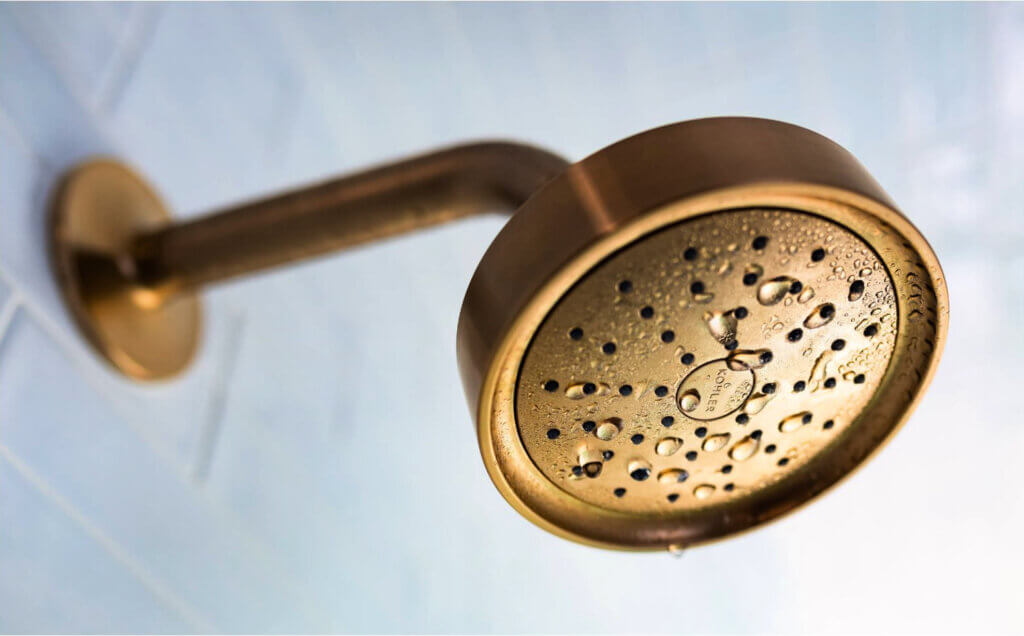
8 Unique Ways to Save Water in the Bathroom
- Uncover Hidden Leaks with Food Colouring: Here’s a simple trick: add food colouring to your toilet tank. When coloured water appears in the toilet bowl without flushing, you have a leaky toilet. Fix it immediately and save up to 4,000 litres, or 1,056 gallons, of water monthly.
- Invest in a High-Efficiency Toilet: It’s time to say goodbye to your old toilet! Replace it with a high-efficiency model that uses less water per flush. This single step can help a family of four save up to 30,000 liters, or 7,925 gallons, of water annually, reducing household water consumption by as much as 20%.
- Switch to Water-Efficient Shower Heads: Out with the old, in with the new! Ditch your old shower head and opt for a water-efficient model. Choose one that uses 9.5 liters per minute (2.51 gallons) or less. Consider an ultra-high-efficiency shower head that uses as little as 5.6 liters per minute (1.48 gallons) to be even more eco-friendly. These changes can result in water savings of up to 160,000 liters (42,267.53 gallons) per year for a family of four.
- Recycle Unused Water: Doesn’t it seem wasteful to let the water go to waste? Put it to better use. Collect the initial cool water in a bucket or watering can when waiting for the shower to heat up. Use it later for watering plants, hydrating pets, or cleaning around the house.
- Rethink Your Bath Time Rituals: A quick shower instead of a full bath can substantially decrease water usage. Consider occasionally treating yourself to a relaxing bath rather than making it a daily routine.
- Be Smart While Brushing Your Teeth: Break the running water habit. This might seem trivial, but turning off the tap while brushing your teeth makes a significant difference. Only turn it back on when you’re ready to rinse. Every drop saved counts towards a sustainable future!
- Share Bathwater: For small children, bathe them together.
- Stop Flushing Garbage: Use a bin instead of turning your toilet into a wastebasket.
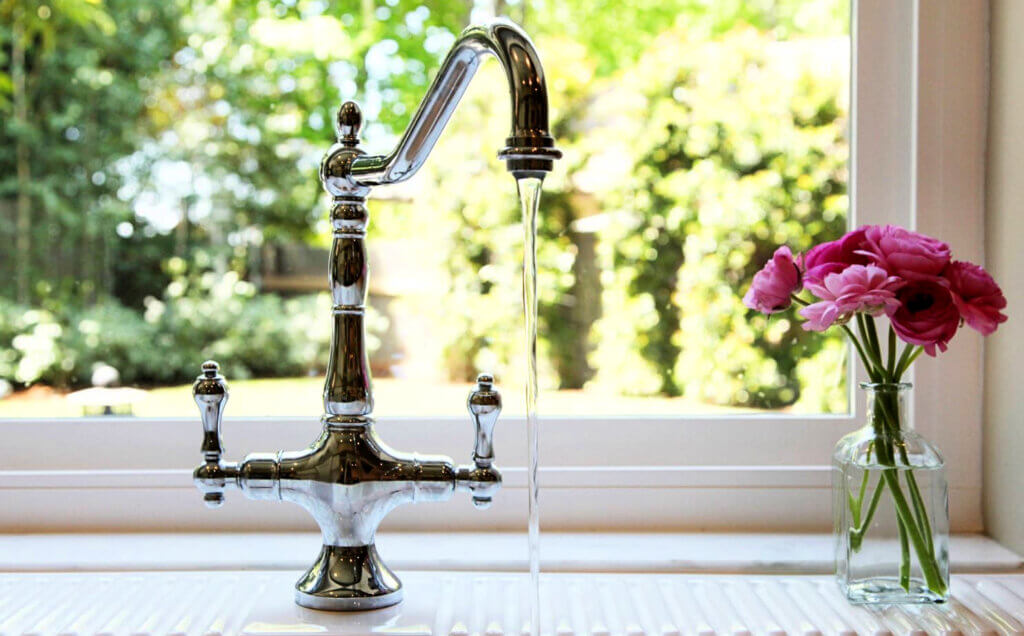
9 Easy Ways to Conserve Water in Your Kitchen
Welcome to a simple yet effective guide to conserving water in your kitchen. As climate change intensifies, water conservation is no longer just a good idea—it’s an essential practice.
Thankfully, it’s not about sweeping changes but about smart, small steps. In this listicle, “9 Easy Ways to Conserve Water in Your Kitchen,” we’ll explore how to cool drinking water efficiently, use smart washing techniques, and leverage your dishwasher for the environment.
By adopting these tweaks, you can save water, cut down on bills, and help our planet right from your kitchen.
Let’s Dive into the Journey of Saving Water One Drop at a Time.
- Keep Drinking Water Cool Efficiently: Save water by storing drinking water in your fridge. Not only will this ensure you have cold water on hand without running the tap, but it also contributes to water conservation.
- Use Smart Washing Techniques in the Kitchen: When washing fruits and vegetables, a basin is your best friend. Also, using a brush will ensure they’re clean without the need for excess water.
- Switch off the Continuous Tap: Use a water-filled basin when rinsing vegetables or washing utensils. This strategy will significantly reduce your water usage and water bill.
- Opt for Natural Defrosting Methods: Instead of using water to defrost your food, let it sit in the refrigerator overnight. This way, you’ll save water and maintain the quality of your food.
- Master the Art of Hand-Washing Dishes: A small dishpan is a great tool for washing and rinsing dishes, allowing you to use water more efficiently.
- Scrape Before You Load: Save water by scraping food residue off your plates before loading them into the dishwasher. This simple practice helps conserve water and increases the lifespan of your dishwasher.
- Turn Food Waste into Compost: Compost your waste instead of relying on garbage disposal. Not only will you save water, but you’ll also have fertile soil for your plants. It’s a win-win!
- Only Run a Full Dishwasher: A dishwasher uses around 6–10 gallons of water per load. However, it’s important to note that the actual energy and water consumption can vary depending on the specific model and settings of the dishwasher. Some newer models are designed to be more water-efficient and may use less water per load.
- Dishwashers vs. Hand Washing: Believe it or not, efficiently using dishwashers can save more hot and cold water than hand washing dishes. Opt for an energy-efficient dishwasher and do your bit for water conservation.
As a result, saving water in your kitchen can be a straightforward process. By making these simple changes, you’ll save water and improve your kitchen routine at the same time.
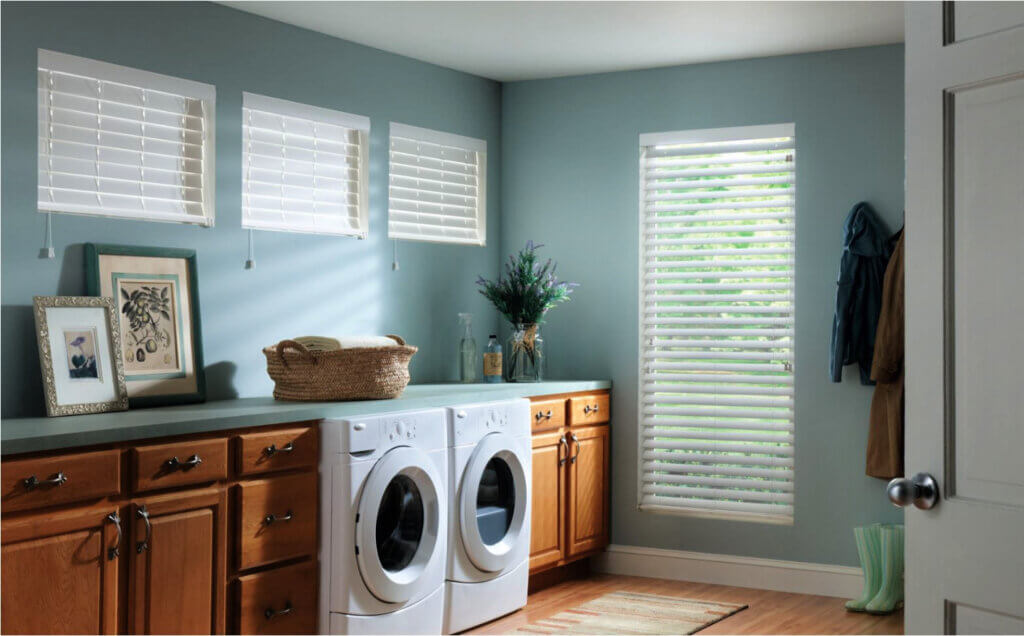
10 Water Conservation Tips for the Laundry Room
Introduction: Water conservation is a crucial practice that helps preserve our planet’s precious resources. The laundry room is one area where we can significantly impact it by adopting water-saving habits. In this listicle, we will explore ten effective tips to conserve water in the laundry room, helping you save the environment and money on your water bills.
- Wait for Full Loads of Laundry: To maximize water efficiency, avoid running the washing machine unless you have a full load. Most modern washing machines have adjustable water levels, so adjust the settings to match the load size. This simple practice can save you gallons of water per laundry cycle.
- Use High-Efficiency (HE) Washing Machines: Invest in high-efficiency washing machines that use less water while providing excellent cleaning results. (HE) washers consume up to 50% less water than traditional models, making them a sustainable choice for your laundry needs.
- Pre-Treat Stains and Soak When Necessary: Treat stains promptly and soak heavily soiled clothes before washing. The result reduces water consumption, long wash cycles, and extra rinses. A little pre-treatment can go a long way toward minimizing water waste.
- Opt for Quick Wash Cycles: Take advantage of quick wash cycles whenever possible. During cycles or cleaning lightly soiled clothes, you’re conserving water! Short wash cycles are a great choice for items that don’t require heavy cleaning.
- Adjust Water Temperature: Lowering the water temperature can significantly impact water conservation. It would help to switch to cooler settings whenever possible when using laundry detergents that work well in cold water. In the laundry, water heating consumes significant electrical consumption, so this tip saves water and energy.
- Reuse Graywater: Consider reusing grey water from your laundry for other purposes. Graywater is wastewater from laundry, dishes, and other non-toilet household activities. Install a greywater system or manually collect it and use it for tasks such as flushing toilets or watering plants. Be sure to follow local regulations and guidelines when reusing graywater.
- Fix Leaks and Dripping Taps: Regularly check for leaks in your laundry room and fix them promptly. Over time, a dripping tap can waste hundreds of gallons of water. Fixing leaks saves water, prevents potential damage to your laundry room, and conserves the energy used to heat the wasted water.
- Use Eco-Friendly Detergents: Choose eco-friendly, biodegradable laundry detergents that are gentle on the environment. Conventional detergents can contain harmful chemicals that can pollute water sources. You contribute to water conservation efforts beyond your laundry room by opting for eco-friendly options.
- Reconsider Fabric Softeners: Fabric softeners require an additional rinse cycle, which adds to water consumption. Skip fabric softeners or look for alternatives like wool dryer balls or natural fabric softener sheets. The wool dryer ball alternatives are reusable, environmentally friendly, and eliminate the need for extra rinses.
- Capture Rainwater for Outdoor Use: If you have a rainwater harvesting system, utilize the captured rainwater for outdoor tasks like cleaning outdoor rugs or watering your garden. In addition to reducing freshwater demand, this promotes sustainable water use.
Conclusion: By implementing these ten water conservation tips in your laundry room routine, you can significantly contribute to water preservation efforts. Remember that every drop matters, and your conscious actions will make a difference. Let’s strive towards a more sustainable future by conserving water, one load of laundry at a time.
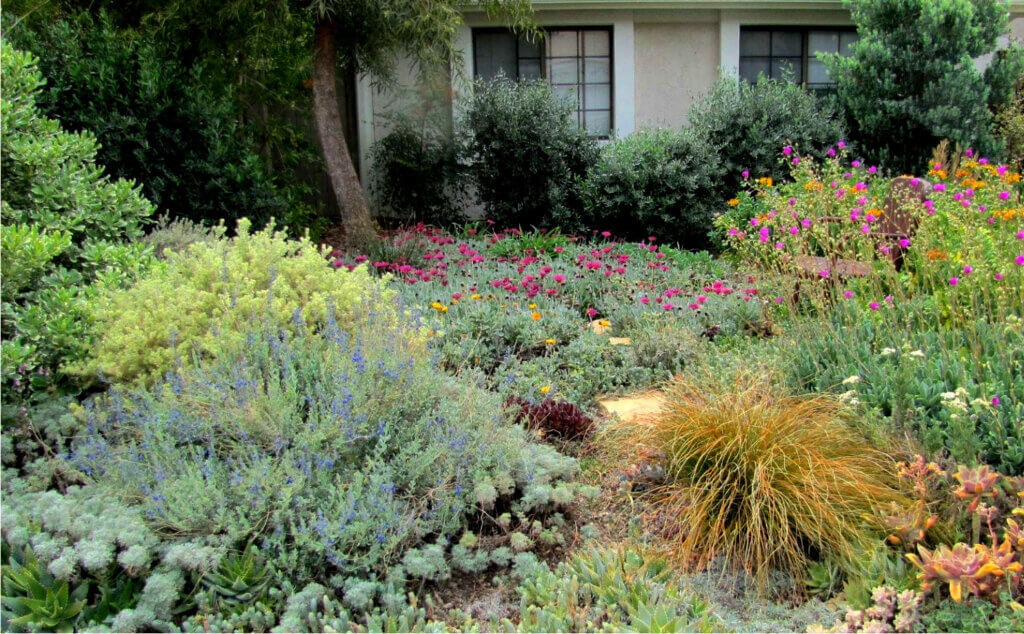
10 Smart Outdoor Water Conservation Strategies
Introduction: Welcome to the world of outdoor water conservation, where we uncover fascinating tactics to save water while still enjoying your outdoor spaces. By implementing these uniquely interesting tactics, you can reduce water waste, promote eco-consciousness, and positively impact our planet. Let’s dive in and explore these innovative ways to conserve water in your outdoor areas!
- Embrace Xeriscaping: Xeriscaping is a landscaping technique that uses drought-resistant plants and efficient irrigation systems. By opting for native and low-water plants, your landscape can be water-efficient, saving thousands of gallons per year.
- Rainwater Harvesting: Harness the power of nature by collecting rainwater. Consider using a rain barrel or a cistern to collect rooftop rainwater. You can then use this water to water plants, wash outdoor equipment, or replenish your garden pond.
- Drip Irrigation: Bid farewell to inefficient sprinklers and embrace drip irrigation systems. Drip irrigation minimizes evaporation and ensures optimal plant hydration by delivering water directly to the root zone. This method reduces water usage by up to 50% compared to traditional sprinkler systems.
- Mulching Magic: Mulch is a plant protective layer, reducing evaporation, suppressing weeds, and improving soil moisture retention. By applying organic mulch around your plants and garden beds, you can conserve water, maintain soil health, and enhance the overall aesthetics of your outdoor spaces.
- Smart Sprinkler Systems: Upgrade your irrigation system to a smart sprinkler controller. These systems automatically adjust watering schedules using weather data and soil moisture sensors. By synchronizing watering cycles with actual plant needs, you can prevent overwatering and reduce water waste significantly.
- Graywater Recycling: Reclaim and reuse household graywater to nourish your plants. Graywater is gently used water from sinks, showers, and laundry machines. Proper filtration and treatment can divert this water to your gardens, reducing the need for fresh water.
- Efficient Swimming Pool Management: Consider implementing water-saving practices if you have a pool. You can reduce evaporation by covering your swimming pool when it’s not in use, while regular maintenance and leak detection prevent unnecessary water loss. Additionally, using pool backwash water for irrigation can help maximize water usage.
- Strategic Plant Grouping: Optimize water usage by grouping plants with similar requirements. This practice ensures efficient watering and prevents overhydration or underwatering. By organizing your garden based on water needs, you can conserve water without compromising the health and vitality of your plants.
- DIY Rain Gardens: Create beautiful rain gardens that serve as both a sustainable landscaping feature and a water conservation tool. Rain gardens capture and filter rainwater runoff, allowing it to percolate slowly into the ground rather than into storm drains—a wonderful way to reduce water pollution and recharge groundwater supplies.
- Education and Outreach: Spread the word about the importance of outdoor water conservation! Organize community workshops, share tips on social media, or engage in local conservation initiatives. By inspiring others to adopt these practices, we can collectively make a significant difference in conserving water and protecting our environment.
Conclusion: By implementing these uniquely interesting outdoor water conservation tactics, you can transform your outdoor spaces into eco-friendly havens. You’ll save water, promote sustainability, and foster a greener world through xeriscaping, rainwater harvesting, drip irrigation, and other innovative approaches. It is important to remember that every drop counts and that we can build a brighter future for the next generation. Let’s make a splash with responsible water usage!
Upgrading Equipment for Better Efficiency
- Fix leaks: A leaky toilet can waste 200 gallons per day. Detect leaks using food coloring in the toilet tank.
- Choose ultra-low flow toilets: Or place a plastic container in your conventional toilet tank to reduce water usage.
- Install low-flow fixtures: Aerators and showerheads can significantly reduce your water usage.
- Invest in high-efficiency appliances: High-efficiency washing machines minimize water and energy consumption by more than 50%.
Conserving Water in the Garden
Gardening is a beloved hobby but can also be a water-guzzling monster. Fear not. With some clever tricks, you can have a thriving garden while saving water.
Mulching: The Magic Carpet
Spread mulch around your plants like a protective blanket. It enriches the soil and stops water from evaporating into thin air. Get mulch or go organic with wood chips or straw.
Drip Irrigation: Water Whisperers
Say goodbye to wasteful sprinklers. Drip irrigation systems deliver water directly to plant roots, minimizing waste. Find the perfect drip irrigation kit for your garden, big or small.
Rain Barrels: Water Saviors
Don’t let rainwater go down the drain. Collect it in rain barrels to quench your plants’ thirst. Learn more about rain barrels and how to install one here.
Educating Others: Water Warriors
Spread the word like a garden guru. Share your water-saving wisdom with friends, family, and even neighbors. Be the hero of your community garden event by sharing tips and tricks with fellow green-thumbs.
Remember: Every drop counts. Let’s save water and keep our gardens blooming.
Landscaping Strategies for Water Efficiency
- Fix irrigation leaks: Repair any leaks in irrigation systems.
- Utilize treated wastewater: Use treated wastewater for irrigation where available.
- Time your watering right: Avoid windy days and water the lawn or garden during the coolest part of the day.
- Understand your plants: Water trees and shrubs, which have deep root systems, less frequently than shallow-rooted plants.
- Sprinkler strategies: Set your sprinklers to only water the lawn or garden, not the pavement.
- Use efficient watering systems: Consider soaker hoses and trickle irrigation systems.
- Install moisture sensors: These can make your sprinkler system more efficient.
Smart Planting for Water Conservation
- Test your soil: Make sure your soil has enough nutrients and organic matter to absorb and retain water better.
- Reduce turf areas: Instead, use native grasses.
- Choose native plants: They require less water and care than ornamental varieties.
Savvy Maintenance to Save Water
- Mulch your plants: Mulch reduces soil evaporation and inhibits weed growth.
- Aerate your lawn: This encourages water movement to the root zone.
- Raise your mower’s blade: Longer grass blades help shade each other, reducing evaporation and inhibiting weed growth.
- Limit fertilizing: Fertilizers necessitate additional watering and promote new development, which will also need extra watering.
Responsible Use of Ornamental Water Features
- Recycle water in ornamental features: If you install or use decorative elements, ensure they recycle the water.
- Consider droughts: Avoid operating these features during a drought and use signs to indicate when water is recycled.
Water conservation is everyone’s job. Try implementing these water-saving tips and start conserving water today!
Limit Recreational Water Use
Remember to have a great time during the hot season when we can splash around in pools and frolic through sprinklers. Let’s not go overboard and waste all the water. We can still have a blast while being mindful of our water usage.
Let’s start by identifying the water guzzlers in our favorite pastimes. Continuously running sprinklers and overfilled swimming pools are the usual culprits.
Water Conserving Alternatives to Pools
If you have a swimming pool at home, try using it sparingly. Try utilizing other options, such as community pools or natural bodies of water, which are more eco-friendly and have better filtration systems. Win-win.
Sprinkler Playtime: Fun but Wasteful
Running through sprinklers is a classic childhood activity, but it’s a big water waster. Let’s get creative and find other outdoor games that don’t involve a constant water flow from the hosepipe.
Tips for Reducing Recreational Water Usage:
- Use public pools: Public pools have efficient filtration systems and serve many people simultaneously, so they waste less water per person than private pools.
- Avoid overfilling inflatable pools: If you decide to fill an inflatable pool at home, only fill it as much as you need. Every drop counts.

10 Reasons Why Using a Pool Cover Will Change Your Swimming Game Forever!
- Conserve Your Pool’s Water: Did you know that without a pool cover, more than half the water in your pool can evaporate in just one year? That’s a massive amount of H2O going down the drain! Regularly using a cover can reduce evaporation by 90 to 95%. Say goodbye to those water-wasting days!
- Bye-Bye Water Loss: Imagine an 18×36 foot pool losing about one inch of water per week during the scorching summer months. That might not sound like much, but adding it up amounts to a staggering 7,000 gallons of precious water lost annually. Don’t let your pool become a thirsty monster – cover it up and conserve water.
- Chemical Savior: Pool owners know the struggle of constantly balancing chemicals to keep the water clean and safe for swimming. But here’s the good news: a pool cover can significantly reduce the need for additional chemicals. By preventing debris and contaminants from entering the water, you’ll have a healthier pool with fewer chemical treatments required.
- Algae’s Worst Nightmare: Algae – the sworn enemy of every pool owner. But fear not because a pool cover can be your secret weapon against this slimy foe. By keeping out sunlight, which algae thrive on, a pool cover helps to prevent its growth. Say hello to crystal-clear water and wave goodbye to those stubborn green invaders!
- Heat Conservation Hero: Want to enjoy warmer water for longer? Look no further than a pool cover! These magical covers help to conserve heat, preventing it from escaping into the cool night air. So, whether you’re taking a refreshing dip on a chilly evening or extending your swimming season, a cover is your trusty sidekick for maintaining the perfect temperature.
- Lower Energy Costs: Who doesn’t love saving some extra cash? With a pool cover, you’ll be delighted to see a reduction in energy costs. By retaining heat and reducing the need for constant heating, your pool’s energy consumption will decrease, giving your wallet and the environment a much-needed break.
- Keep It Clean and Tidy: Nobody wants leaves, sticks, or bugs floating around in their pool. By using a cover, you can bid farewell to these unwanted visitors. Not only will it keep your pool looking pristine, but it’ll also save you time and effort on cleaning. Dive into a hassle-free swimming experience!
- Safety First: Pool safety should always be a top priority, especially if you have children or pets. A sturdy pool cover is an additional protection layer, preventing accidental falls or unauthorized access. Enjoy peace of mind knowing that your pool is secure and guarded when not in use.
- Extend Your Pool’s Lifespan: Pools are a long-term investment, so taking good care of them is crucial. A cover acts as a shield, safeguarding your pool against harsh weather conditions, UV rays, and other potential damage. By using a pool cover, you’ll prolong your pool’s lifespan and save on costly repairs or renovations down the line.
- Eco-Friendly Choice: Let’s not forget about Mother Nature! Using a pool cover is an eco-friendly choice that aligns with sustainable living. By conserving water, reducing chemical usage, and minimizing energy consumption, you’ll do your part to protect the environment while still enjoying your beloved pool.
So, you have ten compelling reasons why using a pool cover is an absolute game-changer. From saving water to reducing chemical treatments, enhancing safety, and enjoying a longer swimming season, a pool cover is an essential accessory for any pool owner.
Educate Others About Responsible Recreation
Spread the word. Besides practicing responsible water use, you can make a difference by educating others. Share these tips with family and friends who may not realize they’re splashing away valuable H2O. You can also get involved in local events that raise awareness about water conservation.
Check out Water Use It Wisely’s 100+ Ways To Conserve Water list for more ideas on how we can all do our part to save this precious resource.
Remember, limiting recreational water use doesn’t mean sacrificing fun. It just means being smarter about how we enjoy ourselves while still being mindful of our planet’s most vital resource.
Reuse Greywater
Save water, save money, save the planet. Reusing greywater is the way to go. It’s like giving your water a second chance at life.
Collecting Greywater
Separate the good from the bad with a nifty greywater collection system. From buckets to plumbing magic, there’s a solution for every home.
Using Grey Water Safely
Stay safe, folks. Don’t drink or cook with greywater. And remember, rules and regulations vary, so know your local laws before diving in.
Gardening With Grey Water
Give your plants a drink they’ll love. Use greywater to keep your garden green and your water bill lean. Just be careful where you aim.
Bathroom Uses For Gray Water
Flush with pride. Refill your toilet tank with recycled greywater and watch those gallons go down the drain. In a good way, of course.
“Every drop saved today is a river secured for tomorrow. Be the guardian of life’s greatest gift: conserve water, conserve life.”
— Colleen Roberts
Spread the Word About Water Conservation
Encourage people to contribute to water preservation by getting involved. Start by educating others about its importance and sharing practical tips on how they can help. Dive in with these ideas:
Share Tips with Family and Friends
Make a splash at home by discussing water conservation. Here are some easy strategies to get the conversation flowing:
- Kitchen Savvy: Encourage running dishwashers only when full, avoiding faucet flow while handwashing dishes, and using a bowl of water for rinsing fruits.
- Bathroom Brilliance: Suggest installing low-flow showerheads, turning off taps while brushing teeth or shaving, and fixing leaky faucets promptly.
- Garden Greenery: Talk about using rain barrels to collect plant water and switching to efficient drip irrigation systems.
Become an Advocate for Water Efficiency in Your Community
If you’re ready to make waves beyond your inner circle, become a water conservation advocate in your community. Here’s how:
- Create Awareness Campaigns: Make a splash on social media by sharing informative infographics and practical steps for water conservation.
- Promote Local Events: Attend seminars or workshops on environmental issues, including water conservation. Spread the word and invite others to join you. Find water conservation events on Eventbrite.
Water Conservation and the Power of Education
Educating ourselves and sharing our knowledge can make a splash in the fight for water conservation. Let’s plunge into the deep end and create an impact, one droplet at a time.
FAQs About Water Conservation
How to Save Water: Water Efficiency Tips and Tricks
Are you looking for ways to save water? Check out resources like the EPA WaterSense and Water Use It Wisely for informative articles.
10 Ways to Conserve Water In Your Home
Fix leaks, use efficient appliances, water plants wisely, reuse greywater, take shorter showers, turn off taps when not in use, collect rainwater for gardening, and educate others about the importance of conservation.
The Importance of Water Conservation
Water conservation is vital as it helps preserve the environment, reduces energy usage, and saves money on utility bills.
Examples of Water Conservation
Install low-flow fixtures, plant native species requiring less watering, and recycle wastewater for irrigation.
Conclusion
Water conservation is crucial for our planet’s sustainability, so let’s get serious about saving water! Reducing water usage at home and in the garden can greatly impact preserving this precious resource. And why not limit recreational water use and reuse greywater to reduce consumption further?
It’s time to educate ourselves and spread the word about the importance of water conservation. Share these tips with friends, family, and neighbors, and let’s all work together for a more sustainable future. So, let’s consciously conserve water and protect our environment for generations to come!
More About Water With Colleen Roberts
Has Your Well Run Dry?
Complete Guide to Repairing a Well that Runs Out of Water
What is the Cost of a Well Pump Replacement?
2023 Guide to Test Lead In Water
Home Drinking Water Fact Sheet
Learn About Private Water Wells
Canadian Drinking Water Guidelines
EPA Drinking Water Regulations
USDA – Install or Repair a Well

Get a monthly update of our most popular articles directly to your inbox such as Water Well Advice including Water Testing, Well Drilling... what you need to know when buying or selling Real Estate with Water Wells, Septic Systems & many other rural living topics!


